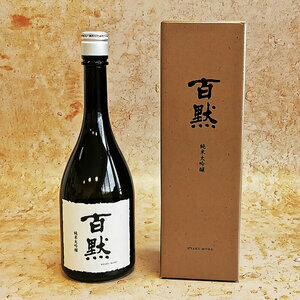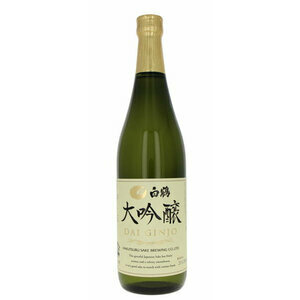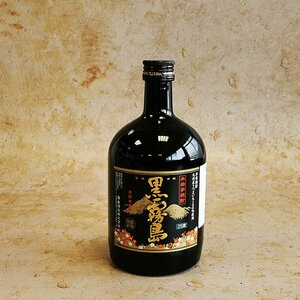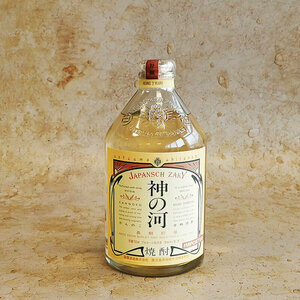

Selection
Japanese alcohols
Enjoy the best of Japanese grocery shopping online now. Discover a selection of high quality sake, selected from the best Japanese breweries. We have selected for you a range of Japanese sakes and whiskeys using several grades and a range of different aromas, as well as a range of modern sakes Made in France, designed with local ingredients and brewed in France by a Japanese master brewer.
A delicately sweet flavor evolving towards an invigorating acidity, then towards a beautiful bitter sensation in the mouth.
SAKE JUNMAI DAGINJO
720ml
View product
SAKE JUNMAI DAGINJO
720ml
 HYAKU MOKU JUNMAI DAIGINJO SAKE
HYAKU MOKU JUNMAI …
Japanese sake
82,00 €
HYAKU MOKU JUNMAI DAIGINJO SAKE
HYAKU MOKU JUNMAI …
Japanese sake
82,00 €
Gold Prize "Monde Selection" eight consecutive years (2011 to 2018).
SAKÉ DAIGINJO
720ml
View product
SAKÉ DAIGINJO
720ml
 HAKUTSURU DAIGINJO SAKE 720ML
HAKUTSURU DAIGINJO …
Japanese sake
26,20 €
HAKUTSURU DAIGINJO SAKE 720ML
HAKUTSURU DAIGINJO …
Japanese sake
26,20 €
Japanese sweet potato alcohol
IMO SHOCHU
720ml
View product
IMO SHOCHU
720ml
 KURO KIRISHIMA IMO SHOCHU
KURO KIRISHIMA IMO …
Japanese shochu
38,60 €
KURO KIRISHIMA IMO SHOCHU
KURO KIRISHIMA IMO …
Japanese shochu
38,60 €
Japanese barley alcohol
MUGI SHOCHU
700ml
View product
MUGI SHOCHU
700ml
 KANNOKO MUGI SHOCHU
KANNOKO MUGI SHOCHU
Japanese shochu
38,30 €
KANNOKO MUGI SHOCHU
KANNOKO MUGI SHOCHU
Japanese shochu
38,30 €

The origin of sake can be traced back to a fermented rice-based drink brought from Japan to China in the third century BC. Since then it has evolved into a unique and sophisticated alcoholic beverage of significant cultural significance to Japanese people.
Although sake is brewed only from rice, it offers a wide variety of tastes like wine. There are believed to be over 2,700 breweries across Japan and each brewery uses different rice, koji mold (yeast), and water (spring water or filtered water) to brew sake in a different way. unique brewing process for each of them. There are also differences in each sake-making region in Japan, adding more complexity to the sake world. To better appreciate it, you should know that it is divided into four main categories: DAIGINJO, GINJO, JUNMAI and HONJOZO.
DAIGINJO
Considered the excellence of Japanese sake, daiginjo has a subtle and fruity taste that is very light and fragrant. It is brewed with rice in which each grain has been polished to 50-65% and the various brewing processes are carried out with great care and attention. Serve chilled or at room temperature.
GINJO
Ginjo is a sake brewed with rice, the grains of which have been polished to 40-50%. Like daiginjo, the flavor of ginjo is light, fragrant, and even complex. Serve chilled or at room temperature.
JUNMAI
Brewed only with rice, filtered water, and koji mold, junmai sake generally has a full, slightly sour flavor. It goes well with a wide variety of foods. Serve hot or at room temperature.
HONJOZO
Honjozo is brewed with rice, filtered water, koji mold and yeast. The grain of rice is polished to more than 30%. A small amount of alcohol is added to the final fermentation process. Dry and sweet, usually lighter and more fragrant than Junmai sake. Serve warm or at room temperature.
Sake isn't just meant to be drunk; it is meant to be savored. It is served in restaurants, bars and lounges in square wooden containers called masu or in small glasses. Drinking sake in wine glasses is a good idea to appreciate all of its color, aroma and flavor. Sake is often served with meals. Depending on its color, bouquet and aroma, it emphasizes the flavor of fish and meat. Sake can be served with hot dishes and with snacks such as rice cakes or gingko seeds.
Sake scale
The categories Daiginjo, Ginjo, Junmai, Honjozo represent top quality sakes. The rest are classified as "normal sake" (Futsu Shu), but there is also a lot of good sake found in futsu shu. In addition, there are other varieties such as Nigori, Nama, and Ume Shu. Nigori sake is unfiltered, subtly sweet and has a white, wadded texture. Nama is raw, unpasteurized sake and has a fresh, light flavor. Ume shu is a sweet plum wine served as an aperitif or wine accompanying desserts. In the sake business, its taste, dry or sweet, is determined by the sake measurement value (Nihonshu Do).
Sake measurement value
Like wines, a sake can be defined in basic characteristics either dry or sweet. In Japan, the Nihonshudo, or sake measurement value, is often used to determine whether a sake is dry, sweet, or in between, by measuring the residual amount of sugar and alcohol it contains. In this measurement, water has a value of 0, and a sake with a measurement value of 0 should taste neutral, neither dry nor sweet. As shown in the figure below, a positive value means less residual sugar and therefore drier sake. Likewise, a negative value indicates sweeter sake.
The best sake tasting temperature
There are 3 ways to serve sake; hot, at room temperature or cool. Sake can be heated in different ways. The most common is the professional sake heater which is used in many Japanese restaurants. Another way to heat sake is to place it in the microwave for 20 to 30 seconds, but the ideal method is to use a double boiler until the sake is at the temperature you want. Most quality sakes are consumed at room temperature or cool like white wine.
How to store sake?
Sake is a delicate alcoholic drink. It is extremely sensitive to light and heat and should be handled like wine. Place the sake in a cool, dry, dark place so that its delicate balance is not affected by direct sunlight.

